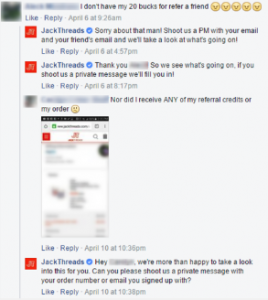
People vector created by pch.vector – www.freepik.com
One of the most important competencies expected of leaders today is the ability to navigate and engage in disagreement. Yet, many leaders struggle. They either handle it poorly or don’t handle it at all.
A few do it well and lead their teams through productive conflict.
Unfortunately, this isn’t the norm.
The good news is that disagreement at work leads to a wealth of benefits. Amy Gallo describes in Harvard Business Review that it produces better work outcomes, opportunities to learn and grow, improved relationships, higher job satisfaction, and a more inclusive environment.
To get to these benefits, disagreement must be conducted in a useful way. This means it remains focused on the work, not on personalities. For example, you don’t disagree with someone because you are annoyed with them. Nor do you interpret another’s disagreement of your idea as a sign of disrespect or a dismissal of your expertise.
Both parties, those who disagree and those who are disagreed with, share the responsibility of keeping the conversation productive.
When these elements fall into place, we are more likely to achieve those benefits Gallo introduced: better results, learning, we like our jobs, and feel included. This week, we address four strategies to help reap the benefits of disagreement at work.
Talk About Disagreement Before You Disagree
We all respond better to someone challenging our opinions if we know in advance that it will happen, and that the person has good intention. We are prepared to be challenged and secure knowing that the disagreement is about the work, and not a personal attack. We might have to remind ourselves of this too. “This disagreement isn’t about me, it’s about the work.”
To get to this end, socialize the idea with your team of engaging in beneficial disagreement. This means to offer the idea and get feedback in a variety of venues. Such as in one-on-one meetings with colleagues, in a check-in with his boss, etc. This approach includes others to build buy-in, gets everyone talking about it, and comfortable with the idea. This is all done before you actually disagree about anything.
Then, you might assign someone to play Devil’s Advocate, or someone to intentionally inspire (even provoke) debate of alternative perspectives. By assigning this role, it provides advanced notice to everyone that disagreement will take place. We all perform better under expected conditions.
State Your Intent, Align to the Goals
Emotional reactions can emerge quickly in disagreement, even if the idea has been socialized and the team discussed in advance how to approach it. Disputes and debates can make people feel offended and no one wants to look dumb in front of others. It is no wonder many avoid it entirely.
If you notice this in the person you’re disagreeing with, take a time-out. State your intentions and align to the goals of the work, which you both share. Reaffirm that you’re on the same team and respect their work.
If you find that you do not share the same goals, then start there. Say “Before we go further, let’s get on the same page of what we want to accomplish? What goals do you have or what results are you shooting for?” Then, share your perspective. Once each person’s ideas are on the table, it makes it much easier to brainstorm strategies to achieve the goals without emotional distractions.
Offer Options and Ideas
Sharing what you disagree with but not offering new ideas or solutions is unproductive and (let’s be honest) a little annoying. It will be interpreted as complaining and it leaves the person you opposed with very little action to take.
Get curious first and ask about other alternatives that have already been explored. Come at it from the perspective that you may not know the whole story. Explore the context and then offer your ideas. When you do, align those new ideas to the shared goals or what the situation is trying to accomplish. This will feel helpful and supportive to the other person while also likely leading to a better, overall solution.
Zoom Out
There will be times when you disagree, do it well, and nothing has changed. You and the team are still going down a path you think is the wrong one to take. The frustration is present, you might feel dismissed and tend to ruminate on how you should have addressed it differently.
Instead, practice a technique called “temporal distancing” or zooming out. This is to consider the time between the present situation and the future. Think about how you will feel about this situation in a week, a month, next year, or five years from now. What impact will this situation have on you in a more distant future? In many instances, the impact is quite low and we are reminded of that just by stepping back and zooming out. It helps us to let go of frustrations and focus on moving ahead.
Disagreement can feel icky to some and exhilarating to others. What we know is that there are sound benefits to it when it is handled well. Get the most out of disagreement by practicing the techniques that make it useful.
This post was originally posted on the Growth Partners Consulting blog.
Business & Finance Articles on Business 2 Community
(31)






